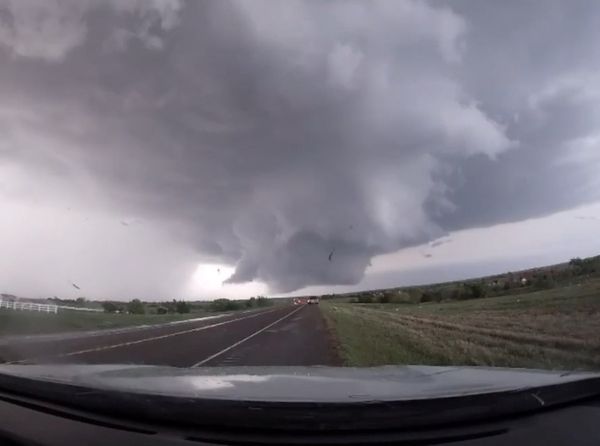Adelaide-based academic Julia Miller was visiting her son in Melbourne in April when her holiday took a turn for the worse.
She was walking along a path into the city when a young woman behind her yelled: "Look out."
"This e-scooter crashed into me, and I ended up on the ground," Ms Miller told ABC RN's The Law Report.
"My right arm felt like it wasn't connected to my right shoulder anymore … and I was just lying there, unable to move."
Ms Miller was left with a broken right shoulder and a broken elbow after she was hit by a 20-year-old woman riding a rented Lime electric scooter.
She was hospitalised in Melbourne before she could return to Adelaide. "Then I was in pain for two months after that. We had hoped that the shoulder would mend but it didn't mend," she said.
"In the end, I had to have a whole shoulder joint replacement."
Ms Miller and the e-scooter rider who collided with her were on a shared pathway, and both had the right to be where they were.
But a serious accident took place. For Ms Miller, the resulting injury required a 12-day hospital stay and over $15,000 in out-of-pocket medical expenses.
So who's financially liable?
Rapid growth in e-scooter usage
Stephen Coulter is the co-founder of Zipidi, an e-scooter consulting firm that also provides insurance to rental companies.
He said e-scooters are among the fastest growing forms of transport for people doing short journeys, such as to and from shops or transport stops.
There are now millions in operation worldwide.
"Within Australia, industry estimates say there's over 300,000 that have been sold in Australia, and that's to private owners. There's also many thousands of them being used in rental schemes in cities around Australia," he added.
Different states have different laws around e-scooters.
Currently it's illegal to ride a privately owned e-scooter in public spaces in New South Wales, South Australia, and the Northern Territory, while Victorian regulations prohibit most newer model e-scooters in public.
Yet e-scooters are sold for private use in those states.
"So 65 per cent of Australians would be breaking the law if they rode one in one of those four states, despite more than 200,000 having been sold in those states," Mr Coulter said.
When it comes to e-scooter rental schemes, they've been around for a while in parts of Australia.
Some of them have already been in operation for up to four years in places like Brisbane, Adelaide, Perth, the ACT and Melbourne. New South Wales is the last jurisdiction to start trialling them.
"What's common around Australia is that [the rented e-scooters] can be ridden on what are called shared pathways … they typically have a dotted line down it and it's a speed limit for bikes. It's shared with pedestrians," Mr Coulter said.
The e-scooter speed limits vary in each state and territory, from 10 to 25kph, he added.
And while they aren't allowed on footpaths in Victoria and New South Wales – which he supports – they are allowed on footpaths in other states at lower speed levels.
'Difficult insurance coverage'
There's already been a number of serious accidents in Australia involving e-scooters. Most recently, a 15-year-old boy died after falling from his e-scooter in Brisbane.
But if you get hit by someone on an e-scooter, the fine print surrounding who's liable can be tricky to navigate.
Alice Robinson, a personal injury lawyer with Melbourne's Polaris Lawyers, is acting for Julia Miller. She said the courts generally look at who is responsible for the accident, and whether it was intentional, accidental or negligent.
The insurance policies can also be difficult to navigate.
"Generally speaking, the insurance [for Lime] almost doesn't cover the rider for any injury, it forces the rider of the e-scooter to give up any entitlement to injury to themselves," she said.
When it comes to other people injured by a rider, the policy is quite narrow and can be easily voided, she said.
For example, if the rider of a scooter had a phone in their hand or if they aren't wearing a helmet, then the insurance policy won't respond, she said. Or if the rider is not riding in a place that's approved for the scooter, the policy won't cover the injured pedestrian.
"So what's really tricky about this type of difficult insurance coverage is that a pedestrian who, through no fault of their own, has serious injuries after being hit by a scooter can find themselves a bit at a loss for compensation," Ms Robinson said.
Navigating the fine print
At the time of the interview, Ms Robinson hadn't contacted the e-scooter rental company Lime yet, as she was awaiting further information from police and ambulance reports. Ms Miller's case is ongoing.
So whether the responsibility for compensation should lie with the rider or the company in this case, the lawyer said she believed that the responsibility was shared between both parties.
"But this particularly narrow insurance policy … totally fails to provide for that person who's a step removed from the rider of the scooter, and who has absolutely no control at all over whether or not they get hit by a scooter," she said.
A spokesperson for Lime Micromobility said: "Safety is the foundation of everything we do at Lime and we are proud that the overwhelming majority of our rides are completed safely both here in Melbourne and around the world."
They added that any incidents in which someone may have been injured would be investigated.
"We have numerous measures in place to prevent unsafe riding that take place before trips begin and once riders have started their journeys," the spokesperson added.
Stephen Coulter pointed out that many e-scooter rental companies in Australia do have comprehensive insurance, but the insurers have a standard exclusion for illegal activities.
"And in the particular case that's being mentioned, the police have alleged there were two breaches of the law involved.
"One was that the person riding the scooter was not wearing a helmet, which is the law. The second is that they were making inappropriate use or riding inappropriately on a shared pathway. And we haven't seen the specifics of that," he said.
Ms Robinson said e-scooters shouldn't be allowed on footpaths, which are for pedestrians. She also said there needed to be an adequate compensation scheme for both riders and pedestrians.
"Because this young girl who had an accident, there would have been no compensation for her. There could be legal bills because of the accident that happened to somebody else. She is not properly covered by the insurance policy of the scooter company," she said.
"I think it's just a matter of balancing the risks against the implementation and making sure that corners aren't cut with the set-up of a scheme like this.
"And that we do make an effort to protect people like Julia because it wasn't as though she was dancing down that footpath and getting in the way."
RN in your inbox
Get more stories that go beyond the news cycle with our weekly newsletter.







